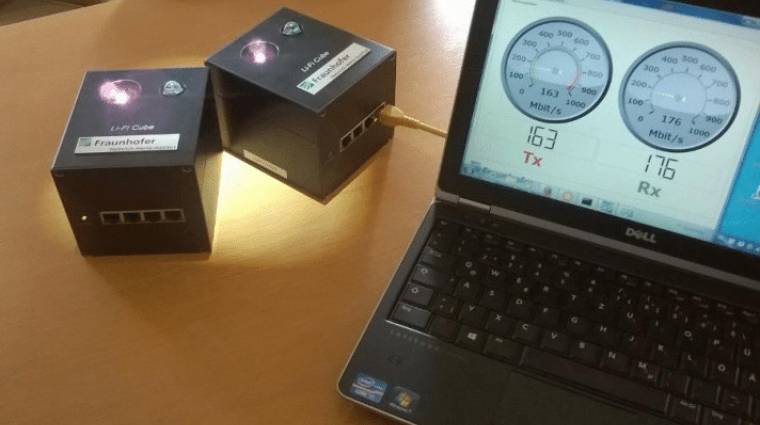The technology could partially take on the role of WiFi: it performs the same function, but works with light rather than radio waves.
WiFi and wireless communications in general are now an integral part of our lives, but the technology is not suitable for increasing the speed to the extreme. Although the data throughput can be increased by increasing the operating frequency, other disadvantages must be taken into account in this case, such as bandwidth reduction.
For this reason, researchers have been grappling with the question of which direction we can take for a long time. One possible solution is light-based connectivity, or LiFi, the first standardized version of which has just been completed. The name of the standard is IEEE 802.11bb, which indicates that LiFi is not only similar to WiFi in name, but also belongs to the same family of standards. However, the similarities pretty much end there.
Instead of radio waves, LiFi relies on the fact that the LEDs used actually turn on and off multiple times, with the goal of energy efficiency. This flickering does not optimally affect the feeling of comfort, because the flickering speed is too fast for the eye to detect. LiFi exploits the timing of this flash.
Not only does the connection work with visible light, but it also works with infrared and ultraviolet light, so you don’t have to worry about apartments being flooded with light because of the connection. Another benefit of using light is that it reflects off the wall; That is, the light does not escape from the flat, so the chance of interference is much less. This can lead to a more stable connection and faster data transfer speeds.
The LiFi concept has preoccupied developers for some time, and a working prototype was finally presented at Mobile World Congress 2023; And now the first unified version has been completed. Obviously, this does not mean that we can run to the store tomorrow, but over time, devices that connect to the light may appear in the house. In some cases, technology may have a raison d’etre rather than WiFi: just think of healthcare institutions, where radio waves can cause a serious problem.
In general, however, LiFi is more likely to complement WiFi networks, and devices will choose between them according to what works best in a given situation. For example, the mobile phone in your pocket can only connect to the Internet using WiFi, but once you take it out, you can switch to LiFi for a faster speed and hassle-free connection.












































